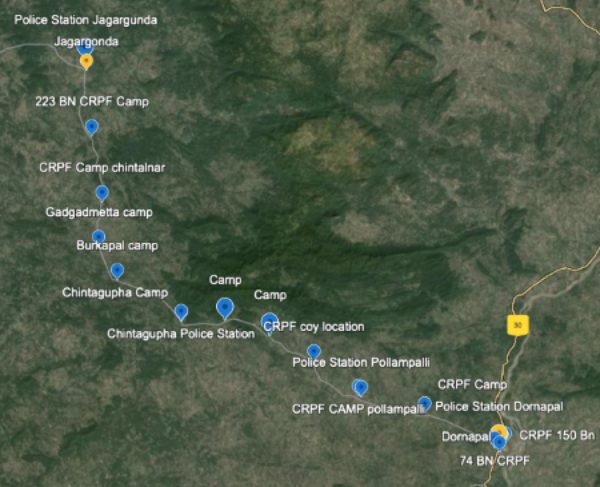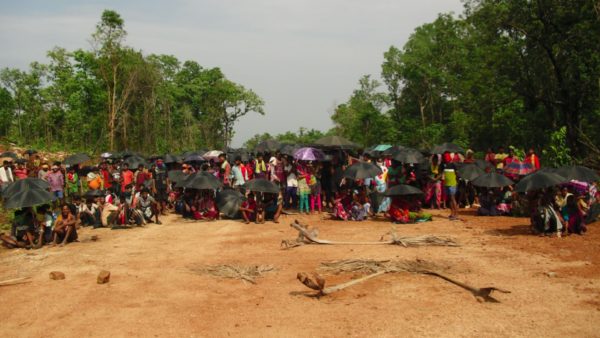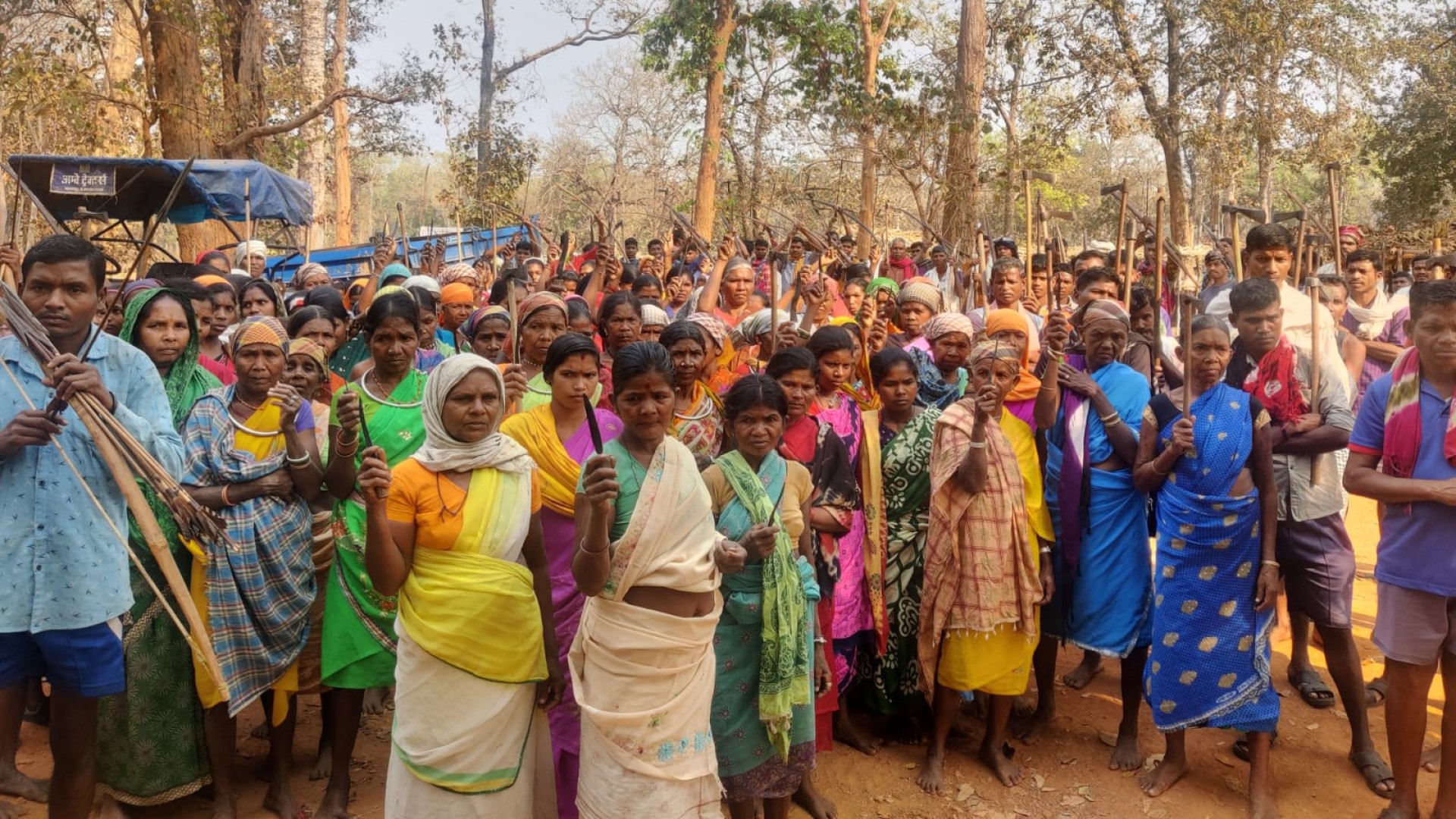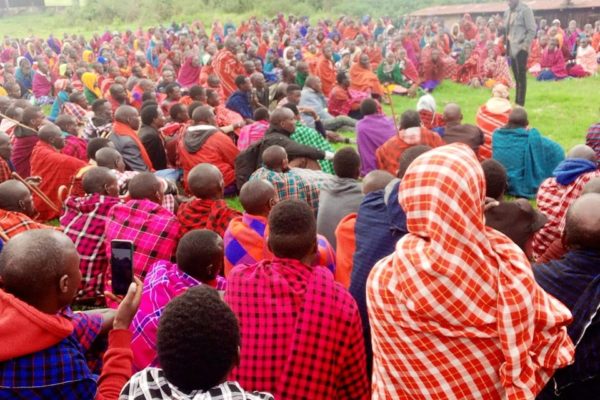Les Adivasis exigent une reconnaissance appropriée de leurs droits autochtones, tels qu'ils sont garantis par la Constitution et reconnus au niveau international
First published on 01/16/2025, and last updated on 02/27/2025
Partagé par InSAF India et London Mining Network
En Inde centrale, dans l’État du Chhattisgarh, la région de Bastar a vu des milliers d’Adivasis tués lors d’affrontements au cours des vingt dernières années. Bien souvent, il s’est avéré par la suite qu’il s’agissait de civils non armés. De nombreux Adivasis ont également été victimes d’arrestations arbitraires, de tortures et de violences sexuelles. En 2024 seulement, plus de 280 meurtres, y compris d’enfants, ont été signalés comme des affrontements ; beaucoup de ces meurtres sont maintenant reconnus comme des exécutions extrajudiciaires.
Les territoires de Bastar, couverts de forêts tropicales et de collines caractérisées par la richesse de leur biodiversité et la fragilité de leurs écosystèmes, s’étendent sur environ 33.000 kilomètres carrés. La région compte environ 2,7 millions d’habitants, dont les deux tiers font partie des communautés autochtones Adivasis les plus vulnérables de l’Inde, notamment les communautés Gonds, Maria, Halba et Muriya. Les terres sont riches en charbon, en fer, en étain et d’autres minéraux rares tels que le corindon et l’or.
Les droits des Adivasis sur leurs terres et leurs ressources naturelles, et notamment le droit à l’autonomie et au consentement préalable, libre et éclairé en cas de modification de l’utilisation des terres, sont reconnus et protégés par la cinquième annexe de la Constitution indienne, la Loi de 1996 sur les Panchayats (Extension des zones répertoriées) et la Loi de 2006 sur les tribus répertoriées et autres habitants traditionnels des forêts (portant reconnaissance des droits forestiers).
Malgré ces protections constitutionnelles et légales, le gouvernement indien a continué à autoriser les industries extractives à s’emparer des terres des Adivasis au nom du développement, et ce de manière systématique.
Pour la période 2022- 2023, les revenus miniers du Chhattisgarh ont atteint 12.941 crores INR (l’équivalent de 153 millions de dollars américains), dont près de la moitié provient du district de Dantewada, dans la région de Bastar. Par contraste, le taux d’alphabétisation et les indicateurs socio-économiques et de développement humain dans les sept districts de Bastar restent parmi les plus bas de l’Inde.
Au cours des deux dernières décennies, de nombreuses entreprises ont conclu des accords avec le gouvernement du Chattisgarh pour installer des usines sidérurgiques et des centrales électriques dans la région. On peut citer l’usine sidérurgique de Tata Steel, d’une capacité de 5 MTPA (millions de tonnes par an) située dans le bloc de Lohandiguda du district de Bastar, et l’usine d’Essar Steel, d’une capacité de 3,2 MTPA, dans les villages de Dhurli et Bhansi du district de Dantewada.
Located in central India, the state of Chhattisgarh in India was carved out of the state of Madhya Pradesh in 2000 to facilitate state-sanctioned and corporate-led resource extraction 1/7 pic.twitter.com/Agzr8LWtir
— India Justice Project (@IndiaJusticeP) November 5, 2022
Adivasis have been protesting en masse for nearly 6 months against the new, illegally built CRPF camp in Silger but the government has not budged one inch – so much for democracy.
— Bela Bhatia (@Belaben) November 3, 2021
(Video below from sabha organised in Silger, 1 November 2021) pic.twitter.com/qXYwfmZ7oe
Il existe même des rivières entières, comme la rivière Sheonath, qui ont été vendues à des entreprises privées.
La résistance acharnée des communautés Adivasis de la région contre leur déplacement forcé hors de leurs terres et la perte d’accès à leurs ressources naturelles au profit de l’industrialisation par des entreprises avides de rentabilité a conduit à l’échec de la plupart de ces tentatives d’industrialisation forcée.
En réponse, le gouvernement indien a massivement déployé les forces armées dans la région. Entre 2005 et 2011, l’État indien a notamment organisé le Salwa Judum, une milice composée de jeunes Adivasis, qui a eu recours aux « évacuations stratégiques » et aurait brûlé et vidé 644 villages, déplaçant environ 350. 000 villageois. Selon le gouvernement, son objectif est de lutter contre l’insurrection naxalite (maoïste). Les rapports de la société civile font état de représailles brutales, notamment de violences sexuelles, de réinstallations forcées dans des camps et de déplacements internes massifs.
En 2009, Salwa Judum s’est transformé en « Opération chasse verte ». Des milliers de policiers armés, issus de diverses branches des forces paramilitaires spéciales des Forces centrales de police armée, ont été déployés dans la région de Bastar. Les miliciens de Salwa Judum ont également été recrutés en tant qu’« officiers de police spéciaux ». En 2011, la Cour suprême de l’Inde a déclaré Salwa Judum illégal et a interdit l’utilisation de jeunes Adivasis dans les opérations de contre-insurrection.
Depuis 2014, les orientations générales du Premier ministre Narendra Modi et du gouvernement nationaliste hindou du Bharatiya Janata Party ont ouvertement intensifié la privatisation et la dérégulation néolibérales. Le gouvernement a renforcé sa stratégie de « Clear, Build, Hold » (en français, « Nettoyer, construire, contrôler » ) qui consiste à utiliser les forces armées pour faciliter l’entrée des grandes entreprises minières dans le Bastar. Malgré l’arrêt de la Cour suprême, l’État déploie actuellement les Gardes de réserve du district, un bataillon de la police du Chhattisgarh, composé de naxalites démobilisés et de jeunes de la région, à Bastar, aux côtés des forces de la Police armée centrale, qui comprennent des divisions d’élite lourdement armées.

Entre 2017 et 2019, les camps militaires se sont également multipliés dans la région. Dans certaines zones, il y a des camps tous les 3-4 kilomètres, avec un ratio d’un militaire pour 9 civils, faisant de Bastar l’une des régions les plus militarisées au monde.
Dans le même temps, plusieurs mouvements de résistance de masse ont vu le jour au sein des communautés Adivasis de la région de Bastar. De nombreux lieux de résistance pacifique de Bastar sont dirigés par de jeunes Adivasis qui défendent les droits humains et qui ont été confrontés à la violence de Salwa Judum au cours de la décennie précédente. Il s’agit notamment de la plateforme Moolvasi Bachao Manch ( « Mouvement de protection des Peuples Autochtones »), Maad Bachao Andolan, et d’autres organisations.
En savoir plus :
- The Siege of Silger: A Report on Bastar’s Anti-Camp Movement, Forum Against Militarization and Corporatization (Forum contre la militarisation et la privatisation), 15 juillet 2022
- Rights group flags ‘repression’ of Bastar tribals by security forces under guise of fighting Maoists par Imran Ahmed Siddiqui, 13 août 2024, The Telegraph India
Le recours à des violences intenses, systématiques et généralisées pour expulser les communautés résistantes des zones minières implique notamment l’utilisation de drones, dans le but explicite de surveiller la vie quotidienne de la population, et de lâcher des bombes de mortier. Ces bombes ont des effets dévastateurs sur les pratiques traditionnelles des communautés autochtones, telles que la collecte de la fleur saisonnière de mahua dans les forêts.
Les forces de sécurité et l’administration harcèlent et intimident les activistes, et les soumettent à des pratiques de violences physiques, de détention illégale et d’incarcération, sur la base de lois censées lutter contre le terrorisme et la criminalité organisée.
D’éminents défenseurs des droits humains, tels que Surju Tekam et Sunita Pottam, ont été arrêtés sur la base de lois antiterroristes, ce qui témoigne du durcissement de la répression de la résistance à l’accaparement des terres. En octobre 2024, le gouvernement du Chhattisgarh a également déclaré que le Moolvasi Bachao Manch était une organisation « illégale ».
Now public: I wrote to the Government of #India about the arbitrary arrest & detention of Adivasi woman human rights defender Suneeta Pottam. Regrettably, I did not receive any response @IndiaUNGeneva
— Mary Lawlor UN Special Rapporteur HRDs (@MaryLawlorhrds) October 15, 2024
Read the full communication: https://t.co/LHX5daQaJa
Ce qui se passe à Bastar ne relève pas seulement d’un conflit territorial ou d’une insurrection, mais de la négation totale des droits humains universellement reconnus par l’État indien et de la lutte des communautés Adivasis pour leur survie, leur dignité et la reconnaissance de leurs droits autochtones face à la violence de l’État et à l’avidité des entreprises.
Cette situation requiert une attention et une solidarité mondiales immédiates en faveur de la résistance des Adivasis face au cycle de la répression, pour garantir que les voix des communautés Adivasis soient entendues et respectées. Le silence face aux atrocités commises par le gouvernement indien rendrait le monde complice de l’effacement des communautés autochtones Adivasis et de leurs territoires dans cette région.

Appel à l’action
Près de 30 organisations de la société civile internationale, actives aussi bien dans le domaine de la justice climatique que dans celui de la liberté académique, ont signé cette déclaration de solidarité et appellent le gouvernement indien à :
- respecter les ordonnances de la Cour suprême ;
- respecter les protections constitutionnelles et légales dont bénéficient les Adivasis ;
- mettre fin à l’accaparement des terres et adhérer au principe du consentement libre, préalable et éclairé ;
- protéger les défenseurs des droits humains et les activistes ;
- rendre compte de toutes les violations des droits humains et du droit international.
Signez ici pour soutenir les Adivasis de Bastar dans leur lutte contre la militarisation et l’exploitation minière.



